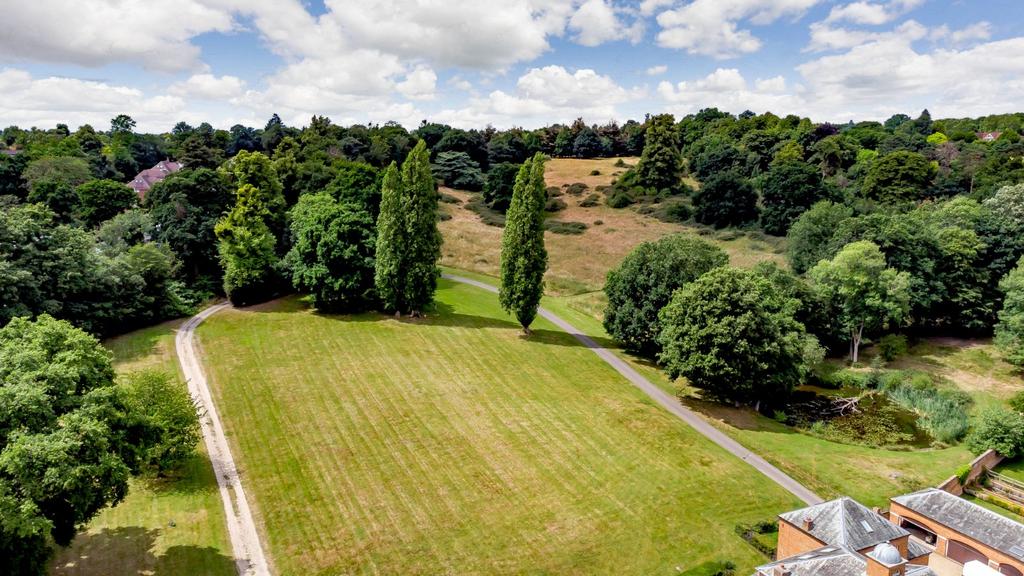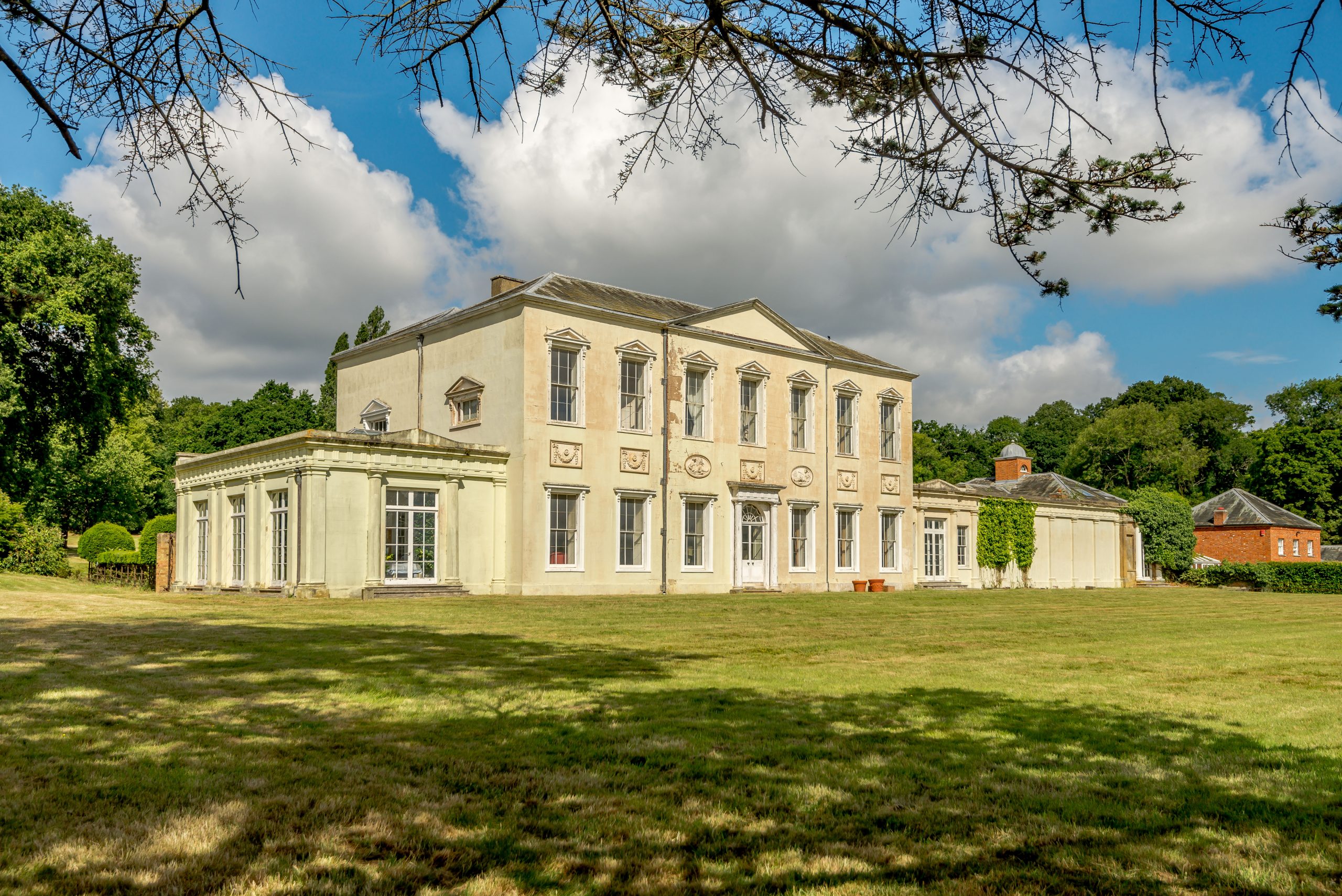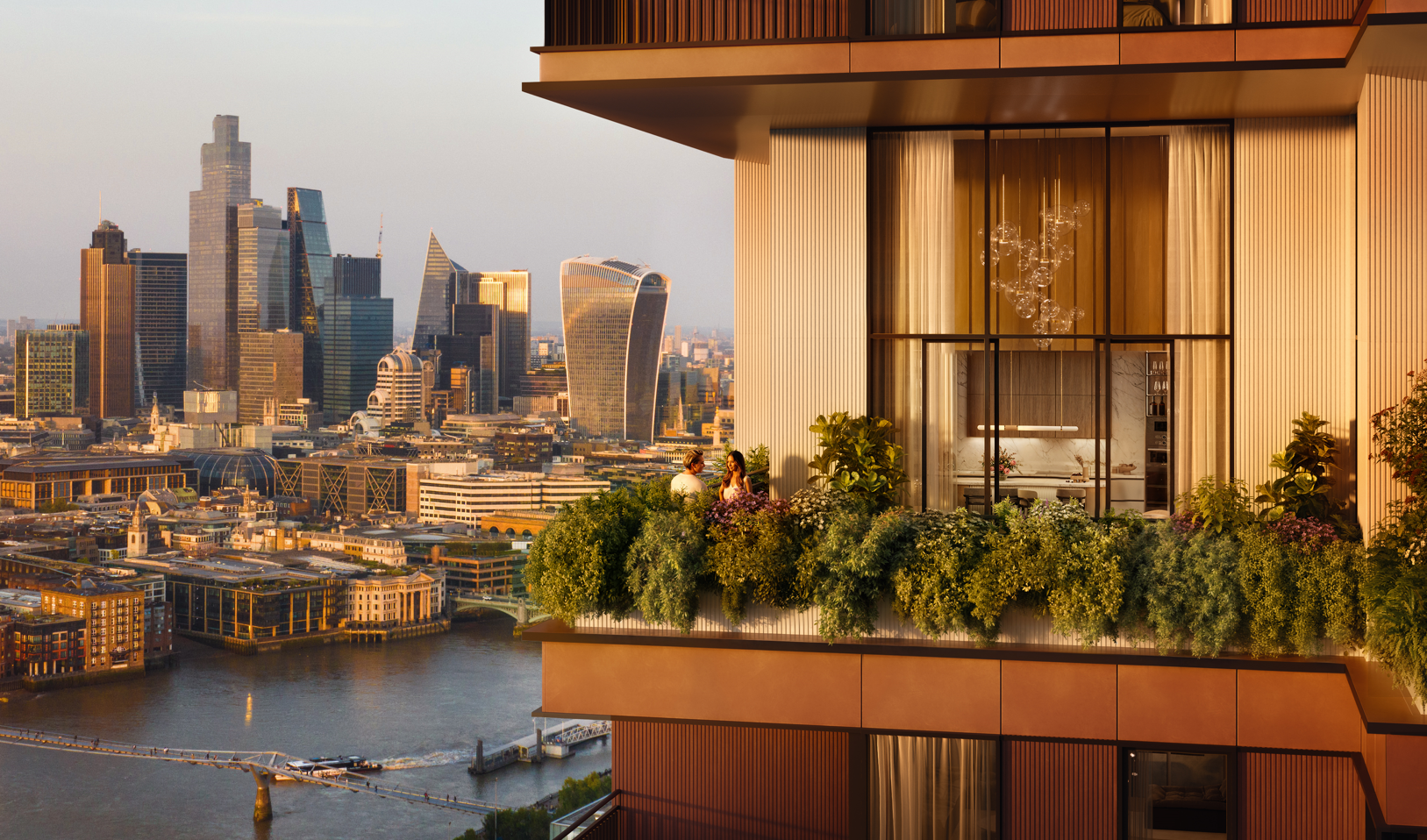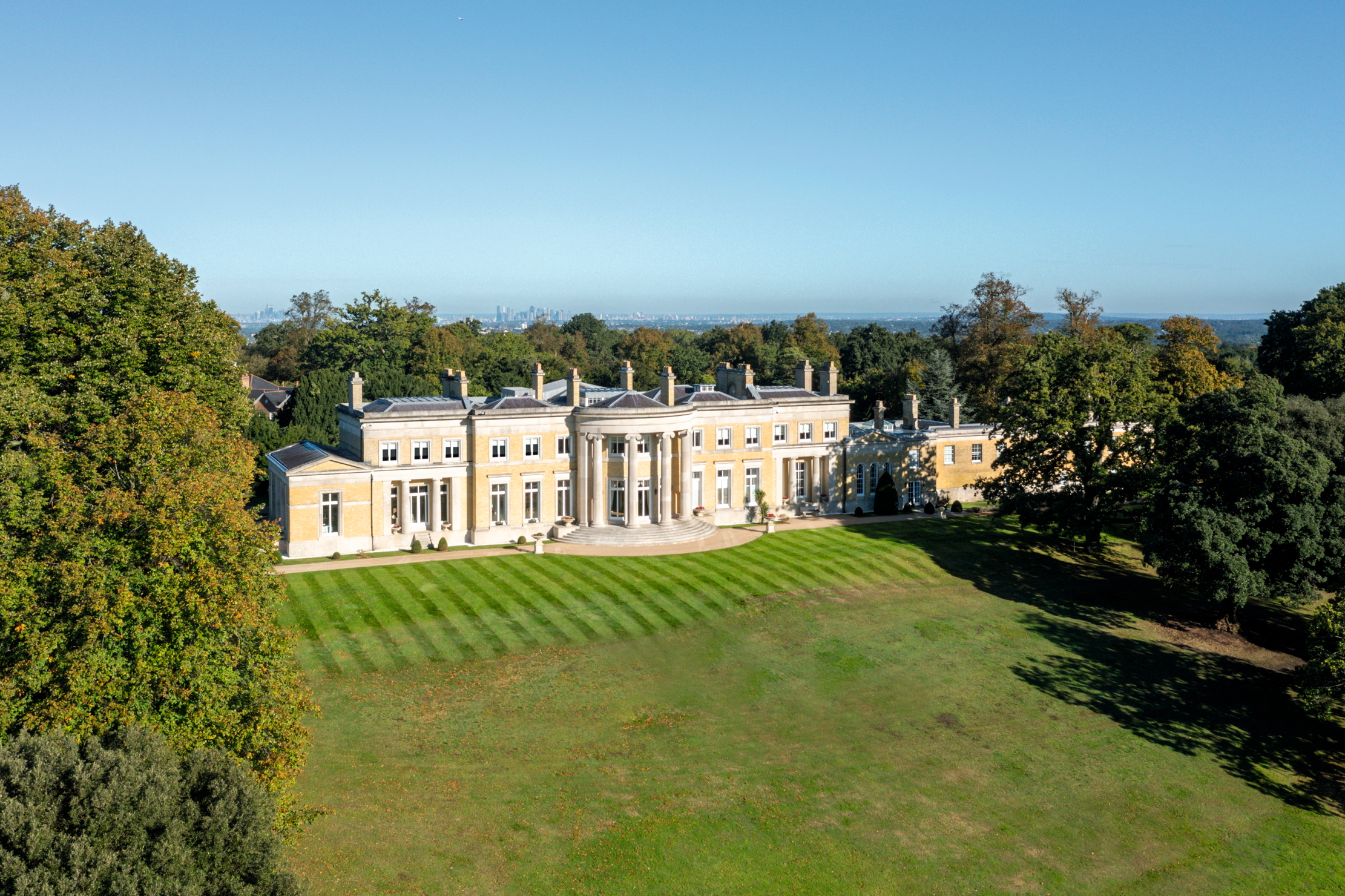A stately home that 'was rescued from the brink of demolition' after the Second World War — now on the market for £8 million
Penny Churchill uncovers the story of Runnymede Park and its remarkable 20-year restoration which has seen it turn from crumbling wreck to a truly elegant estate.


Writing in Country Life (May 11, 2000) of Grade I-listed Runnymede Park near Englefield Green, Surrey, the architectural historian John Martin Robinson commented: ‘Although many fine country houses were demolished in the aftermath of the Second World War, it is remarkable how many others have been rescued from the brink of demolition or ruin by optimistic and determined owners. Runnymede Park in Surrey is a perfect example of such a heroic rescue.’

Known as Crippsfield in the Middle Ages when it was owned by Chertsey Abbey, Runnymede passed to the Crown at the Dissolution in 1538 and was later acquired by Edmund Hilles, who built a home on lower ground to the south of the present house and owned the estate from 1575 to 1633.
In 1760, John Jebb, Dean of Cashel in Co Tipperary, bought the old house and estate for £1,400. He died in 1787, leaving his property to his son, David, a prosperous flour miller who owned mills at Slane and Drogheda.
He had the old house demolished and commissioned Samuel Wyatt to build the present one between 1789 and 1792 on a more elevated site to take advantage of the fine view south-east over Runnymede towards the River Thames and London.

By a series of purchases and exchanges, including that of some Crown land in 1807, and the diversion of the nearby main road away from the house, he also established the boundaries of the park—still some 66½ acres overall.
David Jebb would have known of the Wyatt brothers, Samuel and his younger brother, James, through his Irish and milling connections. James designed Slane Castle for Jebb’s Irish business partner, William Conyngham, and Samuel designed and built, in 1783–86, England’s first steam-powered flour mill, Albion Mill at Blackfriars, London, a company with which Jebb was also involved.

Interestingly, Samuel was only confirmed as the designer of Runnymede Park by the relatively recent discovery of handwritten draft sales particulars in the Surrey Record Office, prepared when Jebb got into financial difficulties and was forced to sell the estate in 1805. Two Wyatt-office plans for the ground and first floors of the house also survive.
Sign up for the Country Life Newsletter
Exquisite houses, the beauty of Nature, and how to get the most from your life, straight to your inbox.
They show the layout of the house much as it is today, with the drawing room and dining room, each 27ft by 19ft, on either side of the garden entrance, and a smaller library, main staircase and servants’ accommodation on the entrance front, with four principal bedrooms and two dressing rooms on the first floor.

From 1929 until 1939, when it was requisitioned by the military, Runnymede Park was the home of Lady King, the eldest sister of the 1st Viscount Rothermere. Following Lady King’s death in 1945, it was sold in poor condition to a company that planned to develop the park as a zoo, a project that never materialised. The house was to remain empty from 1945 to 1977.
Mr Robinson relates how ‘by the 1970s, most of the roof had gone, the interior was a demonstration case of dry rot and the subsidiary service wing was teetering on the brink of collapse. That part of the house subsequently fell down, with a loud crash, one night’. The way things were going, Runnymede Park might have been a prime candidate for inclusion in the ‘Destruction of the Country House’ exhibition at the V&A Museum in 1974.

Instead, it was bought that year by Mr and Mrs Robert Collins who, in the course of the ensuing 20 years, painstakingly repaired the fabric of the building, redecorated and furnished the interior and rebuilt the stables. Both having recently died, Runnymede Park is for sale, for the first time in 47 years, at a guide price of £8 million through Strutt & Parker’s country department.

The house offers more than 8,600sq ft of Classical living space on three floors, including a reception hall, three elegant reception rooms, a summer room, study and kitchen/breakfast room on the ground floor; the principal bedroom suite, three further bedrooms, two bathrooms and a roof terrace on the first floor; and a two-bedroom guest annexe on the second floor.

It comes with a courtyard of four secondary dwellings, all currently let and producing a steady income.
Runnymede Park is currently on the market via Strutt & Parker with a guide price of £8 million — see more pictures or enquire with the agent for further details.
Egham: What you need to know
Location: North east Surrey, just over 5 miles south of Windsor and 4.9 miles from Heathrow Airport. Train services run from Egham, Virginia Water and Wraysbury into central London.
Atmosphere: The town is home to a good range of shops, a leisure centre, library and museum.
Things to do: There are plenty of good sporting facilities in the area with racing at Windsor, Newbury and Ascot. Polo can be played at Smith's Lawn and The Royal Berkshire, plus there are a number of local golf courses. Windsor Great Park offers lovely walks and Savill Garden.
Schools: Schooling in the area is excellent, with options including Bishopsgate School, St John's Beaumont, Eton College St. George's School in Windsor and St. Mary's School in Ascot.
See more property for sale in the area.

Credit: Strutt and Parker
Best country houses for sale this week
An irresistible West Country cottage and a magnificent Cumbrian country house make our pick of the finest country houses for
-
 The King's favourite tea, conclave and spring flowers: Country Life Quiz of the Day, April 22, 2025
The King's favourite tea, conclave and spring flowers: Country Life Quiz of the Day, April 22, 2025Tuesday's Quiz of the Day blows smoke, tells the time and more.
By Toby Keel Published
-
 London is the place for me* (*the discerning property buyer)
London is the place for me* (*the discerning property buyer)With more buyers looking at London than anywhere else, is the 'race for space' finally over?
By Annabel Dixon Last updated
-
 London is the place for me* (*the discerning property buyer)
London is the place for me* (*the discerning property buyer)With more buyers looking at London than anywhere else, is the 'race for space' finally over?
By Annabel Dixon Last updated
-
 What's a 'wellness village' and will it tempt you back into the office?
What's a 'wellness village' and will it tempt you back into the office?The team behind London's first mixed-use ‘wellness village’ says it has the magic formula for tempting workers back into offices.
By Annunciata Elwes Published
-
 A mini estate in Kent that's so lovely it once featured in Simon Schama's 'History of Britain'
A mini estate in Kent that's so lovely it once featured in Simon Schama's 'History of Britain'The Paper Mill estate is a picture-postcard in the Garden of England.
By Penny Churchill Published
-
 Hidden excellence in a £7.5 million north London home
Hidden excellence in a £7.5 million north London homeBehind the traditional façades of Provost Road, you will find something very special.
By James Fisher Published
-
 Sip tea and laugh at your neighbours in this seaside Norfolk home with a watchtower
Sip tea and laugh at your neighbours in this seaside Norfolk home with a watchtowerOn Cliff Hill in Gorleston, one home is taller than all the others. It could be yours.
By James Fisher Published
-
 A Grecian masterpiece that might be one of the nation's finest homes comes up for sale in Kent
A Grecian masterpiece that might be one of the nation's finest homes comes up for sale in KentGrade I-listed Holwood House sits in 40 acres of private parkland just 15 miles from central London. It is spectacular.
By Penny Churchill Published
-
 Some of the finest landscapes in the North of England with a 12-bedroom home attached
Some of the finest landscapes in the North of England with a 12-bedroom home attachedUpper House in Derbyshire shows why the Kinder landscape was worth fighting for.
By James Fisher Published
-
 Could Gruber's Antiques from Paddington 2 be your new Notting Hill home?
Could Gruber's Antiques from Paddington 2 be your new Notting Hill home?It was the home of Mr Gruber and his antiques in the film, but in the real world, Alice's Antiques could be yours.
By James Fisher Published
